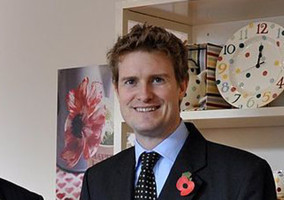Income at the Victoria and Albert Museum (V&A) charity has dropped by £10m due to a decline in central government funding, its latest accounts reveal.
The annual report and accounts for the year to March 2023 show that the charity’ income declined from £131.7m to £121.4m despite it being the first 12 months since 2018-19 that its main south Kensington site was open for a full year.
In 2021-22, the charity received £20.1m from the Department for Culture, Media and Sport for it to spend on capital works, but this was reduced to £9.24m in 2022-23.
Furthermore, the accounts state that visitor numbers still lagged pre-pandemic levels in 2022-23.
“There was significant year-on-year growth in visitor numbers and associated self-generated income, with income from exhibition ticket sales up 27%, and onsite retail sales up 79%,” the report says.
“However, despite 69% growth in visitor numbers over 2021–22, these only reached roughly three-quarters of pre-pandemic levels, reflecting the slow pace of recovery being experienced by the cultural sector as a whole, particularly in respect to international tourism.”
The accounts add visitor behaviour continued to be affected by the pandemic, and the rising cost of living created an additional challenge.
“We found maintaining and growing our membership scheme a particular challenge in this environment. The weak pound sterling helped to drive an improvement in inbound tourism, but pre-pandemic levels remain unmatched,” it notes.
Income streams
The charity received most of its income from DCMS, £67.5m, but this was down on the £78.3m it received the year before.
Donations and legacies increased from £14.5m to £14.8m during the year.
Visitor numbers recovered to some extent during 2022–23 “but remain well below pre-pandemic levels, compounded by the slow recovery of inbound tourism” and “lower footfall will lead to lower commercial income”.
The accounts also identify increasing operational and financial risks relating to inflationary pressures – both in the supply chain and the labour market. These “continue to present a risk to financial sustainability and operational effectiveness”.
Its gross retail sales for the year reached £11.3m (£10.1m through physical shops and £1.3m online), up 57% on 2021–22 results.
There was “a particularly strong performance in the main shop”, with total sales at £8.7m (up 112% on 2021–22 and 11% on 2019–20), “the highest ever for this space”.
The accounts state: “The trustees are acutely aware that the current economic climate and future uncertainty in relation to all income streams require this assessment to remain under review.”
While the V&A had funds of £818.2m at 31 March 2023 (2022: £757.1m), the trustees only have access to the combined total of certain general and designated funds whose value is £53.5m (2022: £46.1m),.
Staff and volunteers
The accounts add: “High levels of inflation in the past year affected operating budgets and our capital programme, and put pressure on salary budgets; we saw higher staff turnover as a result.”
V&A Enterprises Ltd’s staff costs were £27.9m (2021–22: £20.9m), of which £4.6m (2021–22: £3.1m) was for trading activities and £23.3m (2021–22: £17.8m) was for services provided to the V&A.
The accounts state that currently the V&A’s volunteering opportunities are limited to long-term front-of-house roles.
“We lack consistency in how we support volunteers and there is a limit to the numbers we can engage,” they state.
The charity has appointed its first head of volunteering, and has worked with volunteers, volunteer managers and potential volunteers to create new opportunities.
The V&A voluntarily recognises three trade unions in Prospect, PCS and FDA for all employees.
Based on the March 2023 payroll, the highest-earning employee is banded at £160,000–£165,000 per annum, including performance pay and any other benefits in kind, which is up from £145,000–£150,000 the year prior.
The accounts also show the median employee earned £30,100 (2022: £28,858).
Staff turnover was 22.9%, down from 2022 when it was 23.3%.
EDI at the V&A
Equality, Diversity and Inclusion (EDI) was “a major priority and focus” in 2022–23, according to the accounts.
It identified three priority areas, including diversifying the workforce to be more representative of the UK population; ensuring leaders and managers take a positive and proactive approach to EDI; and promoting an inclusive culture at the V&A, taking an intersectional approach.
Some 5.5% of its employees declared themselves as having a disability.
It states, of those that gave details, that 73.3% of its employees were white, 2.1% Black, 5.6% Asian, 3.8 % mixed, 1.6% other.
The gender profile is 73.6% female and 26.4% male.
Employee survey data has highlighted two areas to prioritise: race and ethnicity, and disability.
Related Articles












